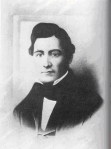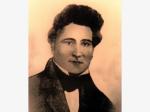 A Review of Tiya Miles, The House on Diamond Hill: A Cherokee Plantation Story. Chapel Hill: The University of North Carolina Press, 2010.
A Review of Tiya Miles, The House on Diamond Hill: A Cherokee Plantation Story. Chapel Hill: The University of North Carolina Press, 2010.
[Note: Those interested in the history of the Cherokee Nation in Georgia know about the Vann House, or think they do. Yet, historian Tiya Miles has produced a marvelous book that began with a series of questions raised when she visited the “Christmas by Candlelight” celebration there in 2006: “[W]hat is it we are connecting with when we walk the oak halls of this exquisite plantation home—one hundred and seventy years after Cherokees were forcibly removed from the South, one hundred and forty years after African American slaves were emancipated from slavery? What really took place on these well-worn grounds? What does this house stand for?” (xv) Her answers to these questions challenge many preconceptions about the Cherokee Nation in general and the Vann House in particular.
Miles tells the story of the Vann House, its people, and their memories of life there, “from its prehistory, to its heyday and downfall in the 1820s and 1830s, to its restoration and commemoration as the Chief Vann House State Historic Site from the 1950s onward.” (3) Her account crosses all sorts of methodological boundaries, employing traditional historical tools, as well as insights from anthropology, oral history, and public history, to illuminate an incredibly complicated story. Careful readers will never look at the Cherokee experience in Georgia in quite the same way again.]
* * * * *
Cherokee entrepreneur James Vann built the first house on Diamond Hill in 1801, a much cruder structure than the current one, and he invited missionaries from the Moravian Church in Salem, North Carolina, to found a Christian mission and school at the site, which they named Spring Place. Diamond Hill and environs was the center of economic activity for neighboring Cherokee farmers.
Vann lived in the house on Diamond Hill with his mother, Wali; several Cherokee wives, the most important of whom was Peggy Scott Vann; and his children. James’ favorite son, Joseph (later known as “Rich Joe”) Vann, inherited the home, and his slaves built the famous brick manor house that still survives.
James Vann was murdered in 1809; his wife Peggy Scott died of consumption in 1820, ten years after becoming the first Cherokee to convert to Christianity, thanks to the influence of Moravian missionaries John and Anna Rosina Gambold; and Joseph Vann, the man who actually built what’s today known as the “Vann House,” died in a steamboat accident on the Ohio River in 1844, a decade after he and his family had abandoned Diamond Hill following pressure from the state of Georgia under the so-called “Compact of 1802,” and from the federal government, under the provisions of the Indian Removal Act.
Sounds pretty straightforward, right? Well it would, had Tiya Miles simply concentrated on the Cherokee residents of the various houses on Diamond Hill, but she chose instead to attempt to reconstruct the relationships among James Vann, Peggy Scott Vann, and their more than one hundred African American slaves. Miles’ strategy renders the story of “the house on Diamond Hill” incredibly complex, but also immensely rewarding.
* * * * *
James Vann was a nasty man, so much so that no one investigated his murder very thoroughly–it was almost as though the authorities believed James Vann had gotten what he deserved. During his turbulent career, his abuse of alcohol appalled the Moravian missionaries he had brought to Georgia to provide schooling for the tribe’s youngsters. Vann also cheated his mother, his sisters, and his wife Peggy out of their property, despite being a member of a tribe organized on matrilineal lines. Moreover, it wasn’t just real property that Vann appropriated for his own use—and abuse—but also the labor of the African American slaves who lived and worked on it.
To Miles, a critical factor must be added when examining the rise of James Vann: “the context and culture of U.S. colonialism and concomitant violence.” (32) Miles argues that James Vann believed “in Cherokees’ collective right to political sovereignty and individual right to human dignity,” even if violence “became his method for pursuing Cherokee freedom, as well as his measure of his standing in social relationships.” (37) After whites destroyed his father Joseph’s settlement in 1782, James Vann decided to take the Americans on at their own game. He established a trading post and ferry near the ruins of his father’s business, and he used the labor of black slaves he had inherited, along with others he had wangled from his sisters. (48-49)
As a result of his drive and his chicanery, James Vann became the wealthiest Cherokee in Georgia, or, as Miles labels him, “a fat cat of the planter elite microculture.” (62) Although Vann’s economic success helped him rise in the esteem of the Cherokee political elite, the Moravian missionaries at Spring Place were not persuaded of his usefulness. According to Miles, John and Anna Rosina Gambold “had come to Vann’s place to impress their faith on the Cherokees, but they found instead a social world where Cherokee cultural ways persevered and Cherokee community agendas predominated.” (69)
Miles sees James Vann both pushing his own materialistic agenda in ways that brought his tribe’s traditions into conflict with those of their white neighbors, and at the same time “advocating for the Cherokees when they needed a hearing and intervening with the U.S. agents when he saw situations that made Cherokees vulnerable.” (69-71) Vann began building a new home on Diamond Hill in 1803, yet again demonstrating “his acclimation to—and simultaneous rejection of—the Euro-American colonial presence.” (74) To Miles, then, the Cherokees’ changing relationship with the United State is a key to understanding what happened to their culture between the end of the American Revolution and the 1830s.
* * * * *
By 1809, the Vann family owned 115 slaves, nearly 20% of the African workforce in the Cherokee Nation. By 1835, “forty-two of the wealthiest [Cherokee] families own[ed] over 525 [slaves], or nearly a third, of the 1,592 slaves in the nation.” (87) Miles argues that the treatment of the slaves on Diamond Hill in the early nineteenth century suggests that Vann’s plantation shared “core features in common with slave communities across the South.” (92) Yet, among the slaves at Diamond Hill “core aspects of African cultural systems were shared, learned, and preserved.” (97) Moreover, Vann’s slaves “socialized with Cherokee adults of both the poorer and the planter classes.” (105)
Following the murder of James Vann in 1809, the Cherokee Council indicated that they disagreed with Vann’s fondness for the Moravian missionaries, ordering that all Euro-Americans leave the Cherokee Nation, though eventually they amended that edict to preserve the presence of a few “useful whites.” Vann’s widow, Peggy Scott, married Joseph Crutchfield, the white overseer of Diamond Hill. James Vann’s favorite son, Joseph, began to build the brick dwelling that modern Georgians know as the “Vann House”; “Rich Joe” Vann and his family eventually emigrated to Tennessee, and from there to the Arkansas River area during the Indian Removal crisis, thereby ending control of Diamond Hill by the Cherokees. (181-182)
* * * * *
In 2002, an Interpretive Center was constructed on the grounds of the Vann House site. And yet, according to Miles, no attention was being paid “to African-descended slaves or Cherokee women” at that time. (190) Since then, however, the site’s small but dedicated staff has tried to incorporate information about the lives and labors of Vann House slaves into their public presentations.
By 2005, local white supporters, organized as the Friends of the Vann House, had even raised enough money to purchase 85 acres across the road, preventing that land from being turned into a trailer park development.
Miles sums up her observations after ten years of studying the Vann House: It “is not an amusement park, not a fantasy farm, not a great escape, but is instead a local and national memorial, a place of suffering for enslaved African Americans and their Cherokee captors.” (197) The diligent research and interpretive skills of Tiya Miles amply buttress that complicated conclusion.
Not only does the author present members of the Vann family with “warts and all,” but her careful massaging of the scattered evidence available also enables her to offer the reader fairly detailed sketches of a number of individuals in the plantation’s slave community, including Caty, who was born to black parents in the Cherokee Nation; Patience, an African native who survived the “Middle Passage”; Grace, a devout Christian purchased by James Vann from Virginia; and Pleasant, who was pregnant by a white man and was purchased in North Carolina by Anna Rosina Gambold, wife of Moravian missionary Brother John Gambold. (Anyone interested in how Tiya Miles’ research strategies enabled her to create these sketches from sometimes fragmentary information should read Appendices 1-3, where Miles not only explains her approach but also gives credit to others who compiled some of the information she uses.)
In short, in The House on Diamond Hill, Tiya Miles upends in significant ways what we thought we knew about life among a prominent Cherokee family and the slaves who did the backbreaking labor on their plantation. And that, as it turns out, is a very good thing, indeed.
____________
For those interested in reading more about Georgia History, here are links to my books on the subject:
 Rancorous Enmities and Blind Partialities: Parties and Factions in Georgia, 1807-1845 (University Press of America, 2015)
Rancorous Enmities and Blind Partialities: Parties and Factions in Georgia, 1807-1845 (University Press of America, 2015)
In Pursuit of Dead Georgians: One Historian’s Excursions into the History of His Adopted State (iUniverse, 2015)
Politics on the Periphery: Factions and Parties in Georgia, 1783-1806 (University of Delaware Press, 1986)








It’s heartening to hear how the curators of the home have responded to the research.
It certainly is, Scott. From what Mile said, she worked very closely with the rangers who supervised the operation at the Vann House, and her interest in the project reinforced what they were trying to do.
I must read this, especially after your fine review. I thought I had heard Miles on public radio, and, checking, I think I did. I thought I heard a piece on This American Life, but, checking, I find it not.
I do find her appearance on Krista Tippett’s broadcast On Being, here:
http://www.onbeing.org/program/toward-living-memory/1344
Glad you like the review, Brent. The book, of course, is even better!